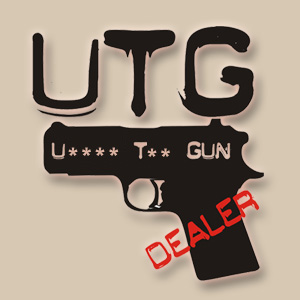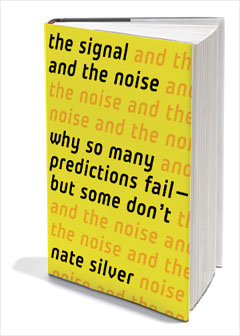
Here is the second part of thestrategy on the 3bet article, based on the memoirs of Aejones.
Today, we will talk through the 3-better a UTG raiseur open. Everything is not black or white, but we'll talk about different possibilities depending on whether the player is tight or loose. When we talk about a tight player, let's talk about a player with statistics around 15/10 and when we talk of a loose player, we talk about a player who is 30/20. Were not talking about stats UTG, but its statistics in general.
I will throw an assertion. I love 3-better the UTG raiseur open with any kind of crap. Why? Ask yourself if the UTG opens with hands like KQs, ATs, AQs, etc. With what hands he wants you playback? If the player is tight, it will probably only with hands like JJ, QQ, KK, AK, and AA. The question is not so much to know with what hands he opened, but to know with what hands it you playback. And is it you playback only with dd +, it is a very small percentage of the time. On the other hand, if a loose player with a lot of hands UTG and he defends himself against the 3 - bet 75% of the time, it will be more difficult 3 - better light.
If I'm in position, I 3-better a TAG regular 22/18 very often because it is very effective. People will often folder when they are going to be out-of-position. One reason for this is that you will look to have a range of hands very hard.
My value range 3 - bet against an open-raiseur UTG will be obviously AA and KK. On the other hand, I can only caller if there is a player who likes sqeezer, but 90% +, I'll 3-better for value. If your opponents fold whenever you 3-better with AA or KK, it's probably because you do not have a fairly high rate of 3 - bet bluff. I rarely go 3-better with AK vs an open - raise UTG simply because it is not always a situation where I want to go all-in, it depends of course of the dynamics of the table. On the other hand, if you have a very high rate of 3 - bet bluff, you should be more inclined to 3-better value for a hand like AK. You can also sometimes 3-better QQ vs an open - raise UTG, but this is a game I'm doing about 33% of the time. Maybe less. And never ever with dd or TT to avoid being caught in a sqeeze.
My bluff - range will be very broad. It includes hands like 56s, 58s, 75o many connectors.
You will not want to have a 3 - bet range is very wide. Open your range of value 3 - bet and reduce your range 3 - bet bluff. You can 3-better hands for value as KJ or QT because they you calleront with bad hands like Q9s and they will fold on several flop. Should never be 3-better a hand like 56 against a fish because it is very difficult to hit the flop. But against the average player or against a good player, it will be more profitable. The range of your opponent will be more important that your own range. It is important that their range is bad and the impression that you give of your range is strong. Remind you that the perception of your range is important. You must give the impression of 3-better open - raise UTG with a range very tight while in reality you do very aggressively. Your range will be highly polarized and it will be very effective because they often go folder.
I put UTG and UTG + 1 in the same category as people play pretty much in the same way on both positions. Remember when I talked about 3-better an open-raiseur UTG, I said need to do it in position. That is, 3-better the cutoff and button. Or, in another situation, UTG opens, I'm UTG + 1 with 56 s, insta-3-bet. You will rarely 4-better and people will play very ABC after your game.
I said earlier that I groupais UTG and UTG + 1 in the same category. On the other hand, I'm going to 3-better UTG + 1 with a range tighter because the 3-better a UTG has the air more strong as the 3-better a UTG + 1. You want your 3 - bet range for value is very tight. And you want it to be very tight. This is why I never go 3-better with QQ against a UTG + 1 recovery. Occasionally vs a UTG. And never with JJ. In addition, I never go 3-better with a smaller pocket pair.
Now there's something I want to add. When I 3 - bet of the blinds, I'll be very very tight. More tight than the majority of players when the time comes to 3-better of the blinds a player who opens UTG. On the other hand, some players will not have that impression because I have 3-better 3 times button online a player who opened UTG and they will not realize that this time in particular, I'm not the button, but the blinds! My range will be tight because this will not benefit to play with a medium hand out of position. Of course, you can still try to confuse a smart player in 3-bettant with 56 s, but it becomes a question of meta-game and, generally, have a range of 3 - bet very tight on the blinds. Obviously, more in more because of 3-better 'air' became popular and even my mother 3-bettait air in late position because people open with so many hands.
There is only 1 place where you can 3-better a player in position so that you will also be in position and it is on the button. The button, when the cutoff opens, you should abuse it and 3-better an extraordinary number of hands and abuse your position. At this position, we can open our value range and our bluff - range against a player who opens cutoff because when we click the button, it will be out-of-position is it foldera much.
When the cutoff opens, I very rarely go flat-caller with a hand like AK or JJ. But there is an exception. If the cutoff is a "random guy" and one of the blinds is a very sqeezy, I'll just caller-flat of the button a hand like AK or JJ. But it is a particular and rare case. So, generally, I go 3-better still my hands like JJ and AK against a raise cutoff because I often get playback. The cutoff will often think that I am this game with nothing, air. And we will also often 3 - better with air. And we need to balance our range.
What will be my range of bluff? Again, 57, 97, 58 s hands playable, but which are not enough good for caller. You can also the hands like AQ or 99 3-better, but stay cautious and folder vs a 4-bet/all-in. It is difficult to give a general because it will always depend on the dynamics of the table, but I hope that it will give you a good idea.




